Truth be told, there are some places and even entire cities that are simply unimaginable without the presence of cats. Take Istanbul, where cats make up part of the soul of the city. Hundreds, if not thousands, of them live in perfect harmony with humans and can be the most adorable companion in case you decide to sit alone and have your cup of Turkish tea.
Another such place is the small seaside town of Kotor in Montenegro. Founded by the Romans, the town lies on the coast of the Adriatic Sea, and its furry residents can be spotted on nearly every cobbled street of Kotor’s old town. The cat frenzy can be felt by taking a look at the town’s souvenir shops, or by the very fact that locals dedicated a museum to cats.
Without cats, both Istanbul and Kotor would lose an important city symbol, a part of the urban heartbeat that can hardly accept any substitute. But while the cats of these two cities roam the streets freely and sleep wherever they wish, there is one special breed of feral cat in Rome that obviously prefers to spend time at sites that hold historical importance.
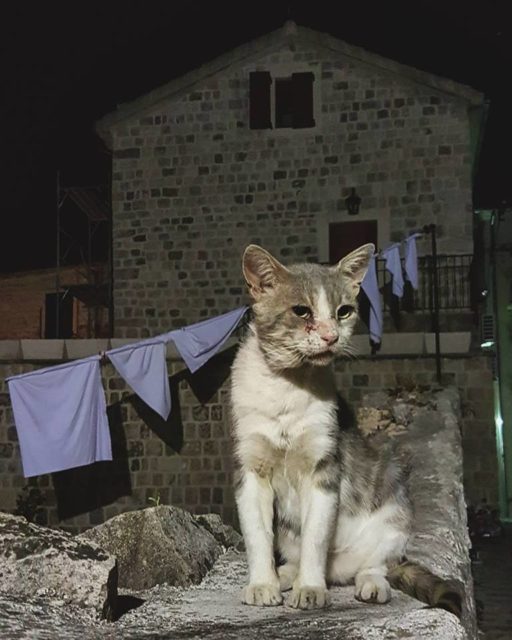
We are talking about the history-appreciating feral cats that thrive at Largo di Torre Argentina, a site where one very important episode of Ancient Roman history took place. It was here that Julius Caesar was betrayed by 60 conspirators and stabbed 23 times in total.
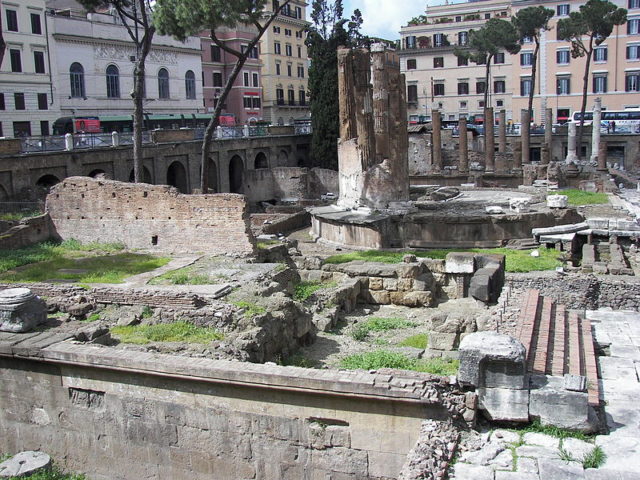
Largo di Torre Argentina is a remarkable ancient site that houses four Republican Roman temples as well as the crumbling remains of Pompey’s Theater. The entire complex is part of the ancient Martius in Rome, which in ancient Roma days was initially nothing but a mushy field found outside of Rome’s city walls.
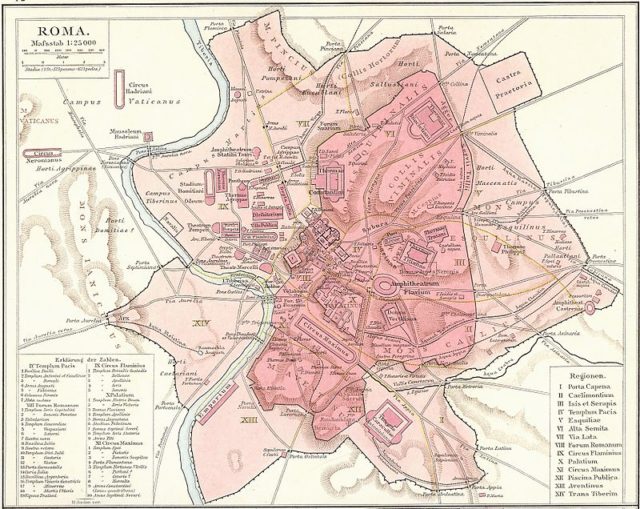
The Roman army would make use of this particular site as a practice field, therefore the name Campus Martius or the Field of Mars, after the Roman god of war, Mars. As Rome grew in prominence and power, it eventually extended its city boundaries, and several of its rulers decided it was important that something was built at the field. Hence the various dwellings, the temples, public baths, theaters and amphitheater, and so forth.
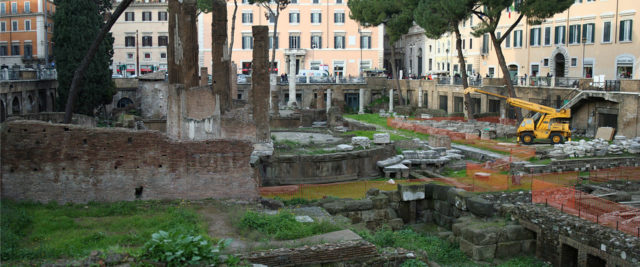
This archaeological marvel was unearthed in 1929 as part of Mussolini’s rebuilding efforts, the remnants of the ancient Roma world lurking hidden some 20 feet below the ground.
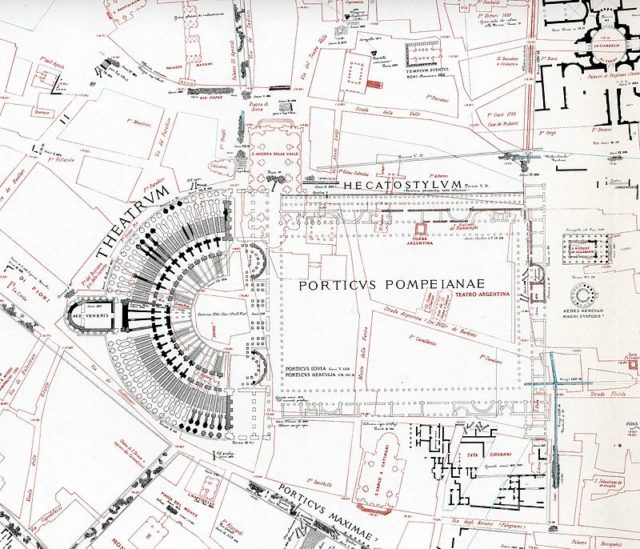
Fast forward in time to today, some 2060 years later, on the same spot where Caesar roared his famous last words “Et Tu Brute?” (You too, Brutus?), and the most frequent sound that can be heard is “Meow.” Torre Argentina now makes the perfect no-kill shelter for over 250 homeless cats. Exactly here, these lovely felines have found their “purrfect” home, adding a new piece of history to the ancient locality.
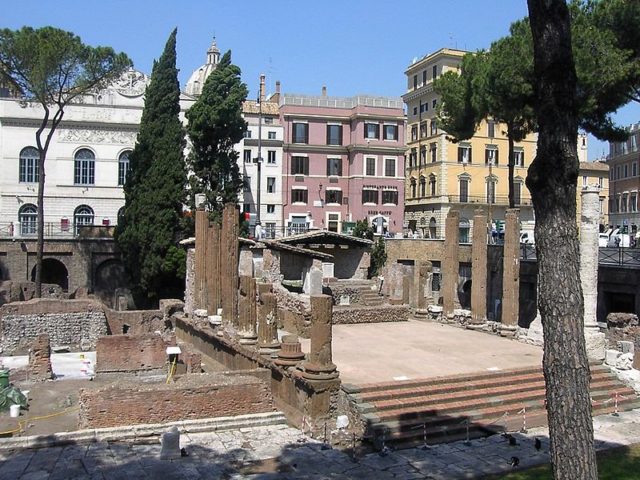
In fact, Roman cats have always been keen on living around Rome’s numerous ancient ruins. They arrived at Torre Argentina quickly enough after the site was excavated under Mussolini and they occupied it as their permanent residence. By the beginning of the 1990s, their number was reportedly around 90 and today they are over 250.
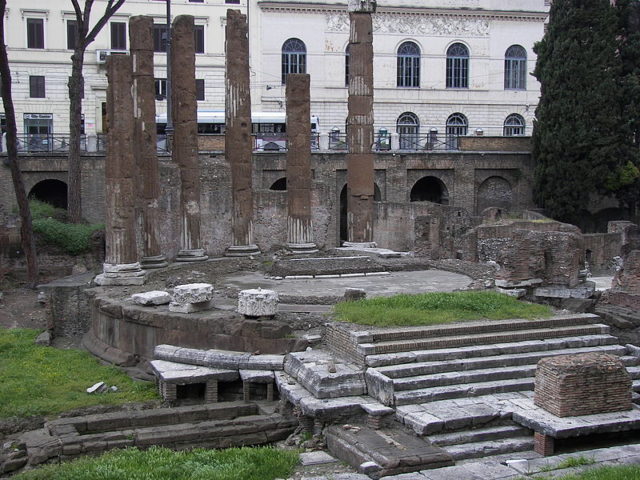
It might be challenging to notice any cat, but take a look again and then they will start coming out from everywhere. Some of the cats appear to be quite old and blind as if they were on the site ever since the days of ancient Rome.
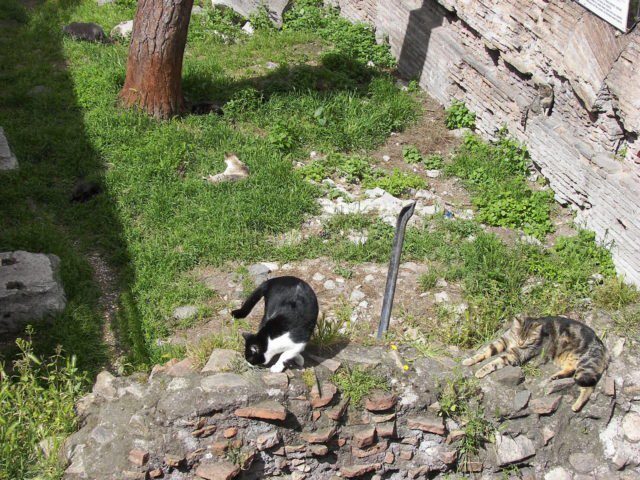
Nevertheless, they are taken good care of by a local volunteering organization of cat-lovers who also feed and sterilize other stray cats in Rome.
Perhaps this is one more reason for you to consider traveling to Rome as your next destination.
